Osprey Publishing - New York 1776
Finally, Osprey had a copy of this for sale. It must be a popular text as it has not been for sale on either Osprey or Amazon for quite some time.
Osprey as of the date of this post, has a sale on Campaign titles. So I picked up Fort William Henry and New York 1776.
With these campaign books, I plan on refighting these campaigns in the near future.
A blog on War gaming in North-eastern North America from 1670-1815, the life of an ex EFL instructor, a family man formerly in Japan and now in Canada , a camper, a reenactor, a drummer, and all round crazy but home Nova Scotian. Having taught for an extended period my career is now in private security.
Friday 28 March 2014
Osprey Publishing - Fort William Henry 1755–57
Osprey Publishing - Fort William Henry 1755–57
Finally, an Osprey volume about the Seven Years War/French and Indian War which mentions the campaigns in Nova Scotia/Acadia.
What you say?!
As part of the narrative for the lead up to the Battle of Lake George, and sieges of Fort William Henry, the expedition under Monckton is mentioned. Even Louisbourg is noted as part of the French strategy to defend New France.
A good volume for a first time writer!
Finally, an Osprey volume about the Seven Years War/French and Indian War which mentions the campaigns in Nova Scotia/Acadia.
What you say?!
As part of the narrative for the lead up to the Battle of Lake George, and sieges of Fort William Henry, the expedition under Monckton is mentioned. Even Louisbourg is noted as part of the French strategy to defend New France.
A good volume for a first time writer!
Thursday 27 March 2014
Sunny days and Axis and Allies
Finally after two days of cloudy and rainy conditions, I was able to take my children outside to play. That meant a trip to the part to play with our Nerf Dart Guns, and to swing on the swings. It was fun, and tomorrow should see us at another park for a picnic.
This shot was taken back in Nova Scotia. My phone camera is still giving me problems.
Wednesday 26 March 2014
What English you can find in Japan
My wife took us all out to see the movie Frozen on her birthday last Sunday, March 23.
She got some M&Ms from a vending dispenser and the paper bags reads.
Sounds Good
Thank you very much for purchasing today.
This is one of our special recommendations of this shop.
Our mission is to make our customer happy with our food and say "what a so tasty!!"
Our pursuing tastiness will never stop.
We intend to offer tasty food that meets your satisfaction. All efforts are for our customers' smile!!
We are looking forward to your visit again.
Ok, rather excited bag for eating M&Ms.
She got some M&Ms from a vending dispenser and the paper bags reads.
Sounds Good
Thank you very much for purchasing today.
This is one of our special recommendations of this shop.
Our mission is to make our customer happy with our food and say "what a so tasty!!"
Our pursuing tastiness will never stop.
We intend to offer tasty food that meets your satisfaction. All efforts are for our customers' smile!!
We are looking forward to your visit again.
Ok, rather excited bag for eating M&Ms.
Tuesday 25 March 2014
Attack on de Vienne house, Beauport, Quebec 1759
This is a fictional battle, but could have happened if the British had been able to ford the Montmorency river further up from the French defences. (All images courtsey of www.cmhg.gc.ca)

The British deployed against the French defences. The British right took some casualties from the French gunners. However, with counter battery fire, and bayonet charges by the grenadiers, the French guns were taken out.The Ottawa warriors then broke, leaving the Canadien milice to hold them back.
In the centre, the British and French guns fired on each other, the French guns held out, but were then threatened by the grenades of the British Grenadiers.
On the French left, the Huron warriors attempted to hold back the British brigade. Eventually with a combination of musketry duels and bayonet charges, the warriors slowly fell back. The Compaigne Franches then came from reserve to hold the line.
Finally, the entire British army bayonet charged the French centre. Knowing the battle to be lost, Montcalm surrendered. Quebec fell, without a direct assualt.

Men of the Compagnie des canonniers-bombardiers of Canada move an artillery piece into place
Shown are various ranks of the Canonniers-bombardiers during the mid-eighteenth century. The men serving the cannon are wearing their waistcoats so that they will not be hampered by their coats and equipment. Sergeants and corporals can be recognized by the silver lace stitched to their cuffs, double lace for the former and single lace for the latter. The drummers are wearing the king's livery with buttons of white metal. The officers' uniforms are identical to those of their men, but of better quality. Reconstruction by Eugène Lelièpvre. The British deployed against the French defences. The British right took some casualties from the French gunners. However, with counter battery fire, and bayonet charges by the grenadiers, the French guns were taken out.The Ottawa warriors then broke, leaving the Canadien milice to hold them back.
In the centre, the British and French guns fired on each other, the French guns held out, but were then threatened by the grenades of the British Grenadiers.

Grenadier officer, 60th (Royal American) Regiment of Foot, 1757-1767
The 60th (Royal American) Regiment of Foot was raised as part of an effort to create units of the British army drawn from the American colonies. The successor to this regiment is still part of the British Army in the 21st century, although it has not recruited in North America for hundreds of years. Grenadiers wore the distinctive pointed cap shown here until these were replaced by fur caps in 1768. The officers and drummers (but not the ordinary soldiers) of the 60th had their uniforms trimmed with lace. Note that grenadier officers carried muskets, unlike most infantry officers. (Library of the Canadian Department of National Defence)On the French left, the Huron warriors attempted to hold back the British brigade. Eventually with a combination of musketry duels and bayonet charges, the warriors slowly fell back. The Compaigne Franches then came from reserve to hold the line.
Finally, the entire British army bayonet charged the French centre. Knowing the battle to be lost, Montcalm surrendered. Quebec fell, without a direct assualt.
Sunday 23 March 2014
Siege of Port Royal May 1690

Massachusetts troops, around 1690
This reconstruction shows some of the defenders of the English colony of Massachusetts, circa 1690. On the left is a militiaman; at left centre, an ensign is carrying a company flag of the Boston Regiment; in the middle stands an officer with sword and spontoon; at right, a cavalryman is wearing a cuirass and helmet. Reconstruction by David Rickman. (www.cmhg.gc.ca) Since the French in Quebec began to attack New York and New England, the New Englanders then decided to hit at Port Royal, Acadia due to the fact that the French were in competition with Boston merchants over the fishery.
For this battle, I shall use 70 English stands, both pike and shot with 10 guns.
The French defenders I have as 9 French stands, with 8 cannons, inside the fort while outside would be about 12 MikMaw warriors.
Campaign in Newfoundland 1696-97
While the New England colonies began to hit Acadie, the French decided to harass the English fishery in Newfoundland
 (www.cmhg.gc.ca)
(www.cmhg.gc.ca)

The French forces for this game in 1/72 would consist of 12 stands of Canadian milice,
10 stands of Les Compagnies franches de la Marine
3 cannons.

For this battle, I have used the Canadian military heritage group site for inspiration as well as Roger Marsters Bold Privateers: Terror, Plunder and Profit on Canada'a Atlantic Coast (Formac, Halifax, 2004)
For the English troops 16 stands of English troops

Gibbon's Regiment was probobly sent out to Newfoundland after this campaign, but for gamming, I'll include them.
 (www.cmhg.gc.ca)
(www.cmhg.gc.ca)
Officer of the Compagnies franches de la Marine of Canada
Although officers of the Compagnies franches de la Marine of Canada were not required to wear any specific uniform, during the 1690s many wore the same colours as their soldiers at the time, namely grey-white and blue. The sword and spontoon, or half-pike, were regulation armaments. Reconstruction by Michel Pétard. 
Soldier dressed for a winter campaign, between 1690 and 1700
This is how a soldier of the Compagnies franches de la Marine would have looked when on the march during a winter expedition between 1690 and 1700. Note his mittens, snowshoes and hooded capot. Reconstruction by Francis Back. The French forces for this game in 1/72 would consist of 12 stands of Canadian milice,
10 stands of Les Compagnies franches de la Marine
3 cannons.

The storming of St John's, Newfoundland, on 30 December 1696
French soldiers and 120 Canadian militiamen led by Pierre Le Moyne d’Iberville and Governor de Brouillan of Placentia raided the British part of Newfoundland between October 1696 and May 1697. The campaign was an outstanding military success and crippled the English colony. The French and Canadian forces took over 700 prisoners and caused some 200 casualties while suffering trifling losses. Print after Massicotte.For this battle, I have used the Canadian military heritage group site for inspiration as well as Roger Marsters Bold Privateers: Terror, Plunder and Profit on Canada'a Atlantic Coast (Formac, Halifax, 2004)
For the English troops 16 stands of English troops

Soldier from Gibbon's Regiment of Foot in Newfoundland, 1697-98
Gibbon's Regiment was the first regular British army unit to be stationed in present-day Canada. Noteworthy on the English musket of the late seventeenth and early eighteenth centuries is the 'dog lock', a kind of small safety catch attached to the gun lock to hold the hammer. Reconstruction by Gerald A Embleton. Gibbon's Regiment was probobly sent out to Newfoundland after this campaign, but for gamming, I'll include them.
Osprey Publishing - Colonial American Troops 1610–1774 (3)
This final volume in the series covered most of the ranger units which were raised in their colonies in order to take on the Amerindians and French in Canada.
Osprey Publishing - Colonial American Troops 1610–1774 (2)
This volume I have used to build my militia and provincial units from the English speaking colonies.
Osprey Publishing - Colonial American Troops 1610–1774 (1)
This volume I have used to both recreate my early colonial army for the English speaking colonies.
This also covers regular regiments which were raised for the British army from their colonies.
Osprey Publishing - Cities of Gold
Osprey Publishing - Cities of Gold
This was the first FOG volume I bought. It lists all the information I needed to build armies for all the civilizations of North, Central and South America.
Luckily for those of us who may be on a budget, or who have bought figures but had no rules to use, this system fits perfectly.
Enjoy
This was the first FOG volume I bought. It lists all the information I needed to build armies for all the civilizations of North, Central and South America.
Luckily for those of us who may be on a budget, or who have bought figures but had no rules to use, this system fits perfectly.
Enjoy
Osprey Publishing - Field of Glory: Renaissance
Osprey Publishing - Field of Glory: Renaissance
This set of wargamming rules is what I use in all of my games from 1480-1815.
While the text lists not as late as the end of the Napoleonic era, it fits the gamming I do for Britain and North-eastern North America.
This set of wargamming rules is what I use in all of my games from 1480-1815.
While the text lists not as late as the end of the Napoleonic era, it fits the gamming I do for Britain and North-eastern North America.
Osprey Publishing - Duty and Glory
Osprey Publishing - Duty and Glory
My most recent addition to my wargamming library. This volume covers my armies for the late 17th century Britian, and into the 18th century in Europe.
My most recent addition to my wargamming library. This volume covers my armies for the late 17th century Britian, and into the 18th century in Europe.
Tuesday 18 March 2014
A day off from school means, it's time to build stuff for games.
My son is bored. He decided to build stuff for our games.
www.wizards.com have some excellent 3D PDF files of buildings and terrain. About 6 years ago, I built up an impressive castle with buildings.
Today, Ian is building a woodmans hut, and a village pub. We'll see if we can do a raid game later today.
www.wizards.com have some excellent 3D PDF files of buildings and terrain. About 6 years ago, I built up an impressive castle with buildings.
Today, Ian is building a woodmans hut, and a village pub. We'll see if we can do a raid game later today.
Monday 17 March 2014
RMR: Rick at the Montreal St. Patrick's Day Parade
Thanks to Rick Mercer for posting this last year. Happy St. Patricks day to those who are Irish or Irish at heart.
Saturday 15 March 2014
British advance off beach at Louisbourg 1758
This little game involved the British regiments in the Louisbourg campaign advancing towards the Fortress of Louisbourg.
The French sent out detachments of Bourgogne, Artois, Volunteer Etranger, Les Compaigne Franches de La Marine along with gunners from Cannonier-Bombardier. Additional support was provided by milice du Louisbourg.
The British advanced with the 1st, 22nd, 28th, 35th, 40th, 48th, 60th, 78th, with Gorehams, James Rogers and Danks rangers. 2 guns of the Royal Artillery were also in support.
The French attempted to ambush the collum but were unsuccessful. The rangers and grenadiers were able to break open the French ambush while the 78th advanced straight onto the French. Eventually with brisky musketry taking out the French gunners, the French pulled back to the safety of the fortress walls. The British were then able to establish their camp.
Osprey Publishing - Quebec 1775
Osprey Publishing - Quebec 1775
This campaign was where the American's attempted to invade Canada.
One of the wargames I intend to redo is Trois Riverer 1776.
This campaign was where the American's attempted to invade Canada.
One of the wargames I intend to redo is Trois Riverer 1776.
Sunday 9 March 2014
Osprey Publishing - Boston 1775
Osprey Publishing - Boston 1775
Come spring vacation, which should be in about 11 days (yippie) I plan on refighting this battle, again.
The forces involved will include: (from plasticsoldierreview)
The patriot militia units were made up of alarm companies, minutemen and basically every farmer in the area who were not Loyalists.

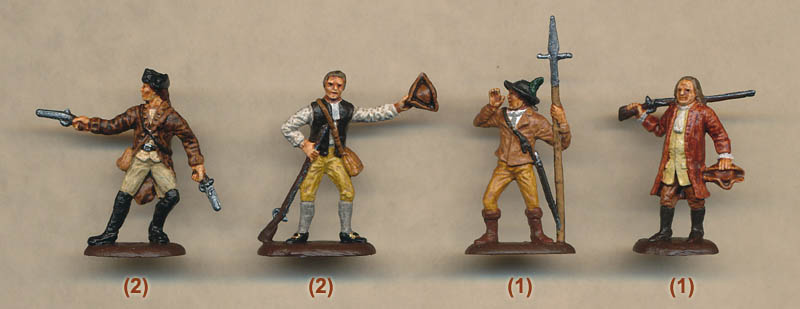

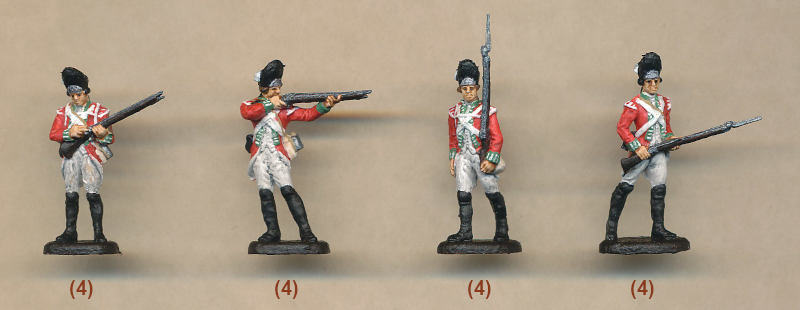
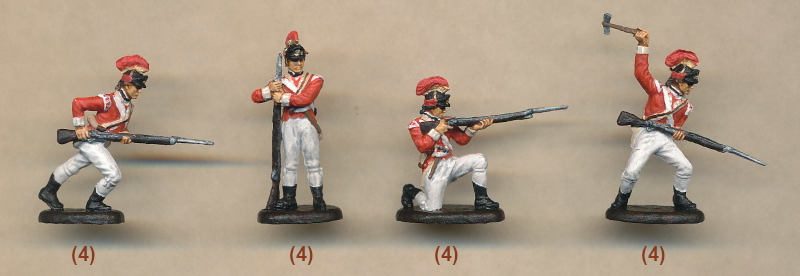
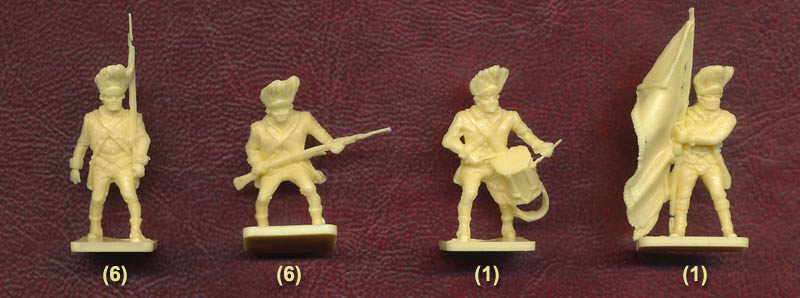

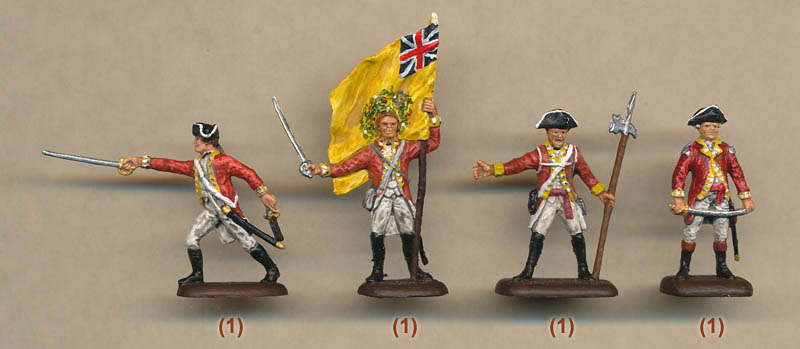
The British force sent out to grab the weapons from colonial militia units consisted of Grenadier and Light Infantry companies, as these were the best trained for the job.
Come spring vacation, which should be in about 11 days (yippie) I plan on refighting this battle, again.
The forces involved will include: (from plasticsoldierreview)
The patriot militia units were made up of alarm companies, minutemen and basically every farmer in the area who were not Loyalists.








The British force sent out to grab the weapons from colonial militia units consisted of Grenadier and Light Infantry companies, as these were the best trained for the job.
All may not be lost on the technical front
In my family we have two laptops with internet connection. I should be able to upload pictures once I put them on a USB, then upload them.
I had a bit of a slight setback this weekend, as I got a fever, then had to visit a hospital to see if I had the flu.
The flu test in Japan is to shove a Q-Tip up both your nostrols!
Oh so much fun!
This has thus put my wargamming off by another week. However, I was working on a WW2 project which I will be adding to my Grampies War blog
I had a bit of a slight setback this weekend, as I got a fever, then had to visit a hospital to see if I had the flu.
The flu test in Japan is to shove a Q-Tip up both your nostrols!
Oh so much fun!
This has thus put my wargamming off by another week. However, I was working on a WW2 project which I will be adding to my Grampies War blog
Wednesday 5 March 2014
My phone seems to be normal again!
Yeah! My Android smartphone seems to be working again. I was able to sign in to my youtube account so I will be able to upload videos of my battles again.
Now if I can just figure out how I can attach pictures again. (still cut and paste, we let our son take this shot, and realised that an 8 year old really can't use a digital camera well.
(still cut and paste, we let our son take this shot, and realised that an 8 year old really can't use a digital camera well.
Now if I can just figure out how I can attach pictures again.
Osprey Publishing - British Redcoat 1740–93
I found Stuart Reid's work on the average British soldier to be insightful, and informative. It showed how within the mid 18th century, the British infantryman fought to enlarge an empire, fought to keep it, and continued to evolve into the insitituion it became.
Osprey Publishing - A Far-Flung Gamble – Havana 1762
Osprey Publishing - A Far-Flung Gamble – Havana 1762
I was interested in this volume as one of the units I reenact is Goreham's Rangers. They were involved in this battle. One of their last actions before disbandment.
I hope to have a few wargames of this campaign. It should be fun to do over the upcoming Spring holiday.
I was interested in this volume as one of the units I reenact is Goreham's Rangers. They were involved in this battle. One of their last actions before disbandment.
I hope to have a few wargames of this campaign. It should be fun to do over the upcoming Spring holiday.
Monday 3 March 2014
More insights in Field of Glory
After getting the companion Duty and Glory, I doubled checked a few things about the game. There are two basics that I have not grasped until now. Impact and the firing dynamics. I have checked and understand now that BOTH sides fire at the same time! This will definetly change some of the games my son and I have. It should be interesting to see how long our artillery will last.
Subscribe to:
Posts (Atom)
